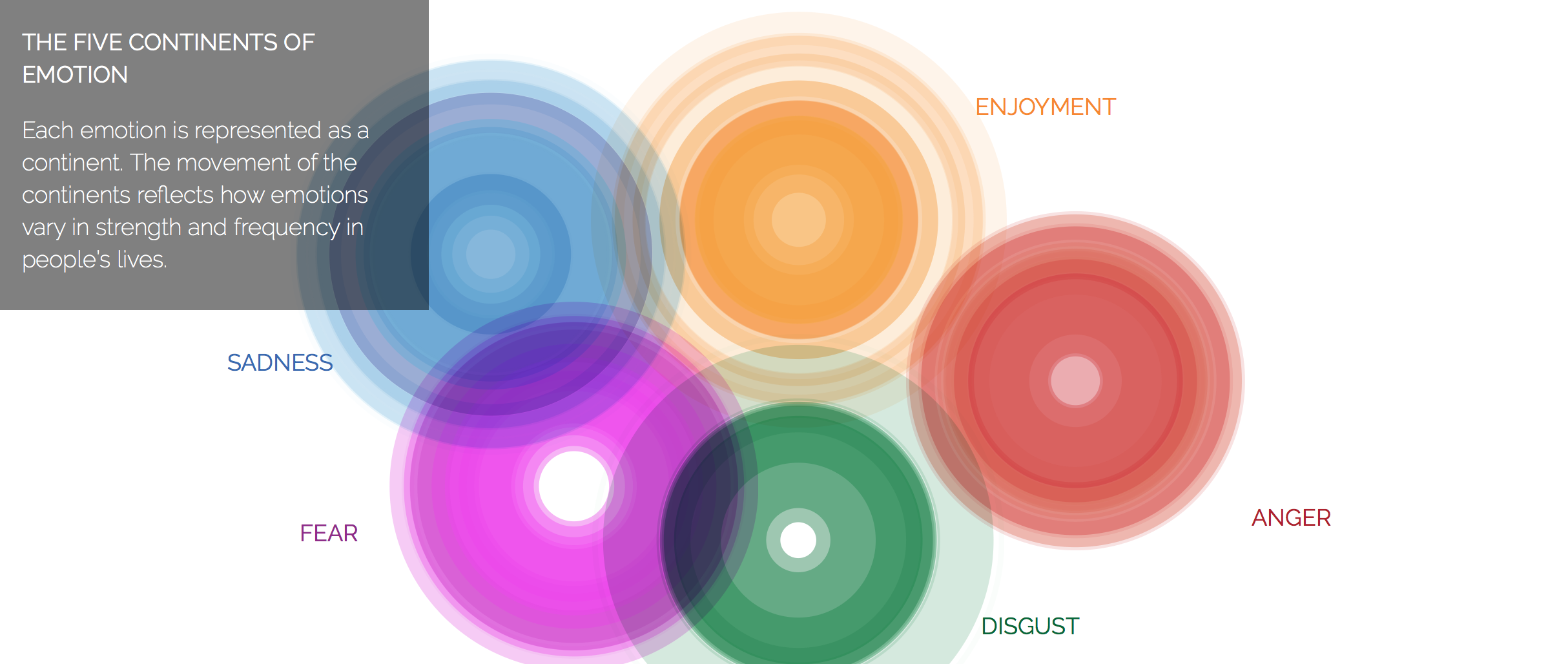The Dalai Lama releases a Map Of Emotions
To come to understand your emotions, that’s not an easy job. They can be confusing and the more you try to analyse and explain, the blurrier it becomes. The Dalai Lama is hoping this new book called ‘Map of Emotions’ will help you understand how emotions arise and what they mean. The ultimate purpose: to help you reach a state of calm.
To produce this book the Tibetan Buddhist leader has teamed up with renowned psychologist, emotion expert and longtime friend Dr. Paul Ekman to make an ‘Atlas of Emotions’ out all of the feelings that a human can experience. It is based on a survey of 248 leading emotion researchers and their consensus about five universal emotions: enjoyment, sadness, disgust, anger, and fear. The collection of maps is an opportunity to explore the landscape of emotions, where they come from, and the effects they can have. ‘We need to learn about our emotions and develop a kind of emotional hygiene. My friend Paul Ekman has been working on developing a map of emotions to help us do this,’ said the Dalai Lama in a press release about the website.
The Tibetan Buddhist leader told The New York Times that when individuals become self-aware about the emotions that they’re experiencing, he believes it can have a ripple effect on society. ‘The goal of this work is to give people more understanding of how emotions work—where emotions come from and the actions they motivate,’ said Dr. Paul Ekman. ‘The Dalai Lama and I agree that emotions can be constructive if they support collaboration. We are a social species.’
All the emotions are translated into a series of landscapes. Each ‘continent’ of the 5 primary emotions contains ‘states’ that are mapped like mountain ranges, with peaks along a scale of intensity. From these states follow likely actions, which can be constructive or destructive. According to the Dalai Lama people need to learn how to counter their various emotions. ‘Distraction is just a temporary measure. The longer-standing remedy is, for example, to be able to see positive qualities in something or someone you otherwise see as negative. Since there is rarely any justification for destructive emotions, people need to become more aware of the causes of their emotions and how to apply antidotes to them.’
You can see it as a new way to mindfulness. Being able to recognise your different emotional states and proactively understand their causes can be extremely effective to manage your state of mind, reaction in certain (tough) situations or day-to-day stresses.
What do you think about this Atlas of Emotions? Let us know on Facebook!










